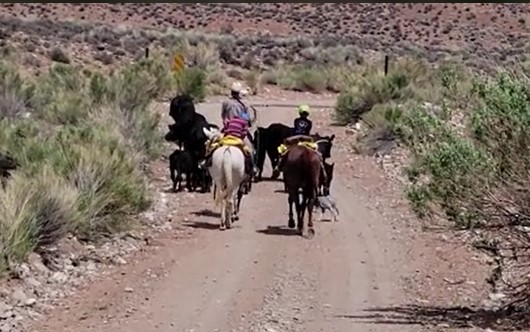
cows and cowboys
The Henry Mountains, Utah— Last week I published the first article in an ongoing investigation by The Current Affairs Times looking into cattle grazing practices here in the US. Boy Howdy, did we wander into a maelstrom.
The first indication I got, that this was a controversial topic, was the bevy of angry comments on the article as I shared it on Facebook on a popular Utah Page. In truth, the article was written primarily from Utah’s own cattle association spokesman’s words and nothing really addressed the controversy of the topic, but that didn’t stop a half dozen vitriolic comments about how much they love hiking through cow crap in the forest and how I should go back to the East Coast.
I also got an idea of how awful this could possibly be when I spoke with Christopher Bugbee, from the Center for Biological Diversity, about an interview. I told him I thought this would make a good subject for a documentary, and he replied, “I guess I’ll be the villain in your documentary, then?”
Little did I know that there were villains and heroes when it came to enforcing good practices in cattle grazing, but I was wrong.
In truth, from what I can tell, the only villains are the people who are responsible for situations like the one I discovered in the Henry Mountains of Southern Utah this past week. My wife and I went for a drive up to see the sights of this majestic yet unknown mountain chain deep in the wilds of the southwest desert.
When she got out of the car, she said, “Do you smell that? It smells sweet like flowers.” Within moments her sweet flowers would turn to gagging and dry heaving at the rancid smell of cow dung we were forced to scrape from our shoes.
The land was pock-marked and torn. The raw dirt stretched for miles, caked with sun-dried cow fecal matter and urine down the mountain pass. The flies swarmed in the unnaturally warm air that seemed a good ten degrees warmer than the surrounding forested areas.
The knowledge that these cows could cause such damage to the natural landscape was well known. Ironically, Utah state officials (presumably) prophylactically installed a fenced-in area to keep mother nature safely in and the cows out. It was broken down by what looked to be a panicking cow, desperate to return to the herd, but showed perfectly a before and after shot of what a Utah mountain top should look like and what it looks like with cows. Here’s the video:
To be clear, the issue is not cows or grazing. It’s not really even the fact that BLM and the Federal government subsidize the wholesale rape of these majestic mountains, propping up a non-profitable practice at the heart of the beef production industry. The problem is that these cows are unsupervised and, according to science, 3000-pound invasive species. The problem is that unregulated grazing of public lands is now a hotbed issue when folks like the Bundy Clan set fire to grasslands in protest to the federal government and nonprofits are lining up to sue the BLM and US Fish and Wildlife over endangered species in Arizona, California and the rest of the Southwest.
“It’s disturbing to see a true desert oasis trampled by cattle and littered with feces,” said Chris Bugbee, Southwest Advocate at the Center. “What’s supposed to be protected as a national conservation area looks more like a feedlot. This senseless destruction has to be fixed right away before we lose more animals to extinction.”
What’s most disconcerting about this problem is the Bureau of Land Management, The US Fish and Wildlife, the US Forest Service, and dozens of other state agencies think that statements like this are enough to answer for what is happening to the wildlands in the name of beef production.

“The Utah Division of Wildlife Resources works closely with the U.S. Forest Service, the Bureau of Land Management, other land management agencies, and private landowners to ensure the long-term sustainability of wildlife populations and their habitat.” says Faith Heaton Jolley of the Utah Division of Wildlife, “The DWR also recognizes the vital role of grazing livestock on public lands, and we strive to reduce any potential conflicts between wildlife and livestock operations. During drought conditions, wildlife is often negatively impacted and populations often decrease. Wildlife and livestock may also compete for limited feed during drought years, and both can be impacted by the decrease in available forage. In southern Utah and other areas of the state are significantly impacted by this year’s drought conditions, the DWR will continue to support and implement management actions that will improve habitat, forage, and water sources for all animals, and we are committed to working with individual livestock producers to provide tools to try and minimize potential impacts.”
The Current Affairs Times is working to get answers from the BLM about this issue and find out what the Federal Government is doing to protect the sensitive lands of the American Southwest while ensuring that our beef industry remains vibrant and profitable. Cows’ free-ranging on public lands is just a lazy answer to a problem that has a complex solution. Much like the water issues that are plaguing the Southwest right now, it will take creativity and imagination to fix this age-old quandary.
Thumbnail Credits: Christopher German
Sources:
- Christopher Bugbee, Center for Biological Diversity
- Lawsuit Seeks to Protect National Conservation Area in Arizona From Destructive Cattle Grazing – Center for Biological Diversity
- Con: Cattle Grazing Is Incompatible with Conservation –
- Faith Heaton Jolley, Public Information Officer, Utah Division of Wildlife Resources







